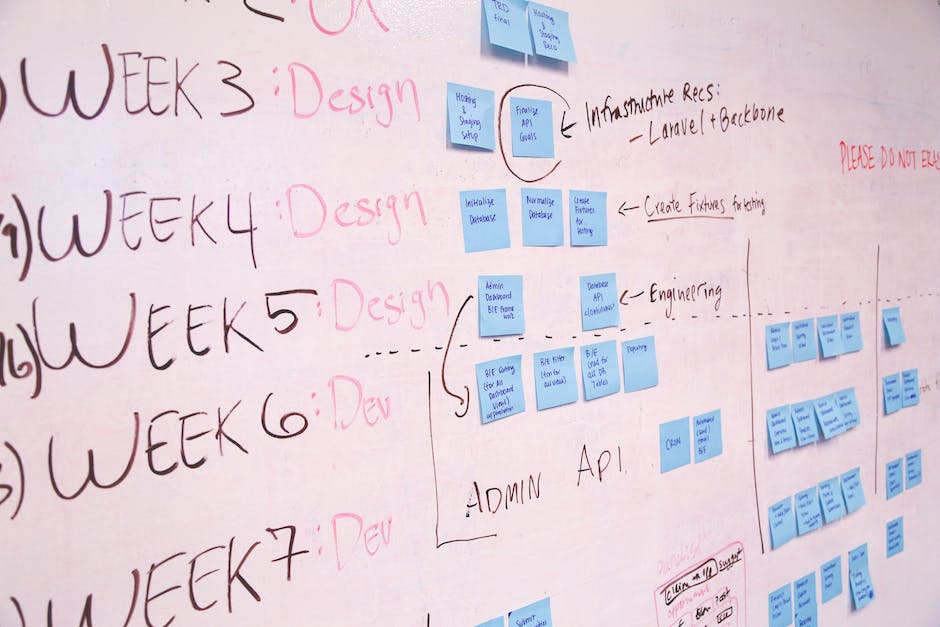Tips for Managing Multiple Clients Efficiently

The world of freelancing is filled with numerous opportunities, but it comes with its own set of challenges. One such challenge is managing multiple clients simultaneously. To stay afloat and succeed in the competitive freelancing market, effective client management is absolutely crucial. In this post, we’ll explore the importance of client management, the challenges it poses, and share some valuable tips for managing multiple clients efficiently.

Understanding the Importance of Client Management
Client management is a critical aspect of freelancing. It involves balancing the needs and expectations of multiple clients, all while ensuring that the quality of your work remains consistent. Failure to manage clients effectively can result in missed deadlines, unsatisfied clients, and ultimately, a negative impact on your reputation and income.
So, what does effective client management look like? It’s about being organized, communicating effectively, meeting deadlines, and delivering high-quality work. It’s about building strong, positive relationships with your clients, which can lead to more work and referrals in the future.
Challenges of Managing Multiple Clients
Managing multiple clients is no easy task. It requires a skillful juggling act to keep all your clients happy and your projects on track. Here are some common challenges that freelancers face:
- Meeting Deadlines: With multiple clients come multiple deadlines. Keeping track of all these deadlines and ensuring that work is completed on time can be challenging.
- Maintaining Communication: Each client requires regular updates and communication. Managing this communication efficiently is crucial to prevent misunderstandings and ensure client satisfaction.
- Ensuring Quality Service: With a focus on meeting deadlines and communicating with clients, the quality of work can sometimes suffer. It’s important to ensure that the quality of your work doesn’t drop when managing multiple clients.
Sound familiar? Don’t worry, in the next sections, we will discuss strategies to overcome these challenges and manage your clients effectively.
Establishing Effective Communication
When it comes to managing multiple clients, effective communication is key. Misunderstandings and miscommunications can lead to project delays, unmet expectations, and unsatisfied clients. As such, it’s essential to establish clear and regular communication channels with your clients. This could involve sending regular updates via email, scheduling weekly video calls, or utilizing project management tools that facilitate easy and efficient communication.
Choosing the Right Communication Tools
With the myriad of communication tools available today, choosing the right one can significantly streamline your communication process. Let’s take a look at a few popular options:
- Email: It’s a classic choice, and for good reason. Emails are great for formal communications, sending documents, and keeping a record of your conversations.
- Video Calls: Tools like Zoom or Skype are perfect for face-to-face meetings, brainstorming sessions, or complex discussions that require visual aids.
- Project Management Tools: Platforms like Slack or Trello are excellent for organizing tasks, collaborating on projects, and keeping all communication in one place.
Each tool has its pros and cons, so it’s important to consider your specific needs and those of your clients when making a choice.
Setting Communication Expectations
Setting clear communication expectations from the beginning can help avoid confusion and frustration later on. This might include defining the frequency of updates, agreeing on the preferred mode of communication, and setting expectations around response times. For example, you might agree to provide weekly project updates via email, respond to all messages within 24 hours, and hold monthly video calls to discuss progress and address any concerns.
Implementing Time Management Strategies
When juggling multiple clients, time management becomes crucial. Implementing effective time management strategies can help you stay organized, meet your deadlines, and ensure each client feels valued and prioritized.
Prioritizing Tasks
With multiple clients and projects on the go, prioritizing tasks can be a challenge. Here are a few tips to help:
- Assess Deadlines: Tasks with the closest deadlines should generally be prioritized first.
- Consider Task Complexity: Complex tasks may require more time and energy, so it’s important to allocate adequate time for these.
- Understand Client Expectations: Some clients may have more urgent needs or higher expectations than others. Be sure to consider this when prioritizing your tasks.
Remember, the goal of prioritizing tasks is not to neglect any client or project, but to ensure all work is completed in a timely and efficient manner.
Using Project Management Tools
As a freelancer, it’s essential to stay organized and keep track of all your ongoing projects, deadlines, and tasks. This is where project management tools come into play. They not only help you manage your workload effectively but also offer features like time tracking, progress tracking, and collaboration with team members (if you have any). But with so many project management tools available, which one should you choose?
Let’s take a look at some of the popular project management tools and their features.
| Project Management Tool | Time Tracking | Collaboration | Task Management | Price |
|---|---|---|---|---|
| Asana | Yes | Yes | Yes | Free with paid plans |
| Trello | No | Yes | Yes | Free with paid plans |
| Basecamp | Yes | Yes | Yes | Flat fee |
| ClickUp | Yes | Yes | Yes | Free with paid plans |
| Slack | No | Yes | No | Free with paid plans |
Maintaining Work Quality
With multiple clients and projects, it’s easy to get overwhelmed and let the quality of your work slip. But remember, your work is your reputation. So, how do you ensure consistent work quality?
Firstly, don’t bite off more than you can chew. It’s better to deliver quality work to fewer clients than mediocre work to many. Second, always proofread your work or consider hiring a professional proofreader. Lastly, invest in your skills. The better you are at what you do, the higher the quality of your work.
Handling Client Expectations
Managing client expectations is a delicate balance. On one hand, you want to keep your clients happy and meet their needs. On the other hand, you need to set realistic expectations and avoid overpromising. So, how do you handle this?
Communication is key. Be clear about your capabilities, availability, and deadlines. Also, don’t be afraid to say “no” when necessary. It’s better to be honest upfront than to disappoint later. Finally, always keep your clients in the loop. Regular updates can prevent misunderstandings and keep your clients satisfied.

Adapting to Changing Client Needs
As a freelancer, you might have noticed that clients often change their needs and requirements. This is a natural part of the business world, where market trends, customer preferences, and business goals can shift rapidly. So, how can you, as a freelancer, effectively adapt to these changing needs?
First, it’s essential to keep an open mind and be ready to embrace change, rather than resisting it. Remember, flexibility is one of the key qualities that clients appreciate in freelancers.
Second, ensure you have a clear understanding of your client’s new needs. This might require additional communication or clarification. Never hesitate to ask questions if you’re unsure about anything.
Finally, consider learning new skills or expanding your knowledge base to meet your clients’ changing needs. This not only helps you adapt but also increases your value as a freelancer.
Reflecting and Improving
Reflection and improvement are cornerstones of any successful freelancing career. But why are they so vital?
Reflecting on past experiences allows you to identify what worked and what didn’t, which can provide valuable insights for future projects. It’s an opportunity to learn from your mistakes and celebrate your successes.
Improvement, on the other hand, is all about using those reflections to better your skills and processes. This could mean anything from learning a new tool to help manage your projects more efficiently, to honing your communication skills for better client interactions.
But how can you practically apply reflection and improvement in your freelancing career? Here’s a checklist to help you evaluate your client management skills and identify areas for improvement:
- Did I meet all project deadlines?
- Was my communication with the client clear and timely?
- Did I manage to adapt to the client’s changing needs effectively?
- Did I deliver high-quality work that met the client’s expectations?
- What feedback did I receive from the client, and how can I use it to improve?
- Are there any new skills or tools that could help me manage my work better?
Conclusion
In conclusion, managing multiple clients as a freelancer can certainly be challenging. However, by implementing effective communication and time management strategies, using project management tools, maintaining work quality, handling client expectations, adapting to changing needs, and continuously reflecting and improving, you can navigate these challenges successfully.
Remember, every freelancer’s journey is unique, and what works for one might not work for another. Therefore, it’s important to find strategies and approaches that work best for you. So, why not start implementing these tips today and see the difference they can make in your freelancing career?
Get Organized & Win More Clients
Kosmo has everything you need to run your freelancing business.